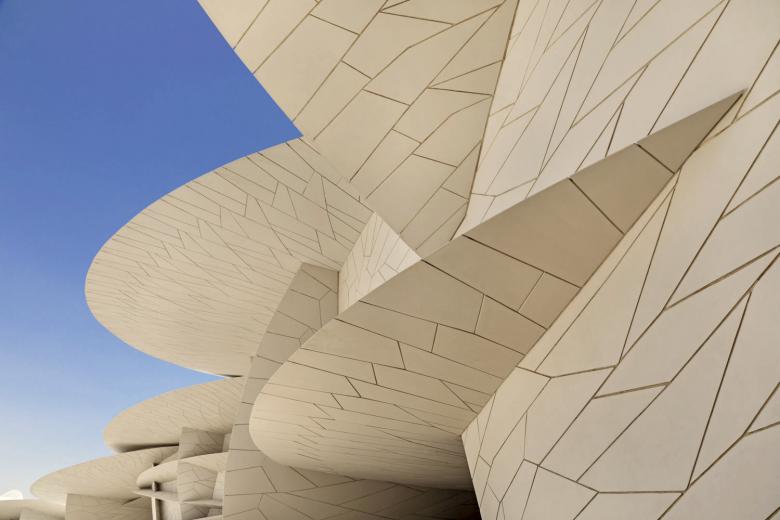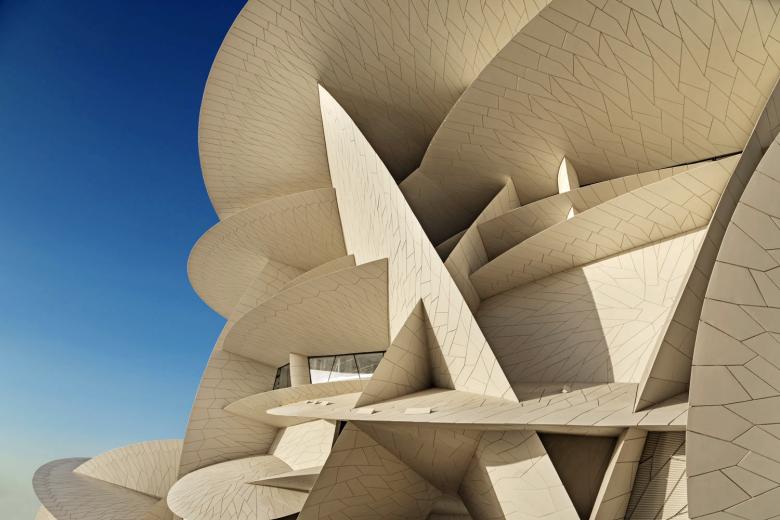National Museum of Qatar
Doha, Qatar
A new National Museum was constructed in the city of Doha as part of an on-going strategy to develop the Qatari capital into an international hub of finance, culture and tourism. The scale and geometric complexity of Jean Nouvel’s vision for the project made planning and installing the building envelope an extremely demanding task. The fundamental concept behind Jean Nouvel’s design was based on the rosette-like structures of the desert rose – a complex rock formation created by the evaporative crystallisation of gypsum in arid, sandy landscapes. Using this motif as a starting point, Nouvel developed a building complex with a footprint of approx. 400 m x 250 m and a maximum height of 40 m. The structure itself consists of 600 different discus-shaped components that intersect with one another. After consulting Jean Nouvel’s detailed architectural plan and call for tenders, the overall project was awarded to Hyundai, the Korean general contractor, at the end of 2011. A core element of the planning process was the BIM (Building Information Modelling) model into which all specialist planners and contractors involved in the project could continuously feed the results of their plans and designs. This model was the only way to handle the high geometric complexity of the project and avoid clashes between individual components. A software system from Gehry Technologies was used to manage the BIM model. Due to the scale of the project and the extremely high level of detail involved (LOD 400), it is currently the largest model of its kind in the world. One of the project’s particular challenges was dealing with the planning processes that needed to be carried out while construction was underway. The degree of overall coordination this required at all times necessitated the constant adaptation of the 3D BIM model for all trade disciplines and called for a highly efficient method of change management that used the most cutting-edge approaches and editing tools, such as automatic clash detection and the simplest possible parametrised procedure for tracking planning data. Werner Sobek was presented with the BIM Award 2016 for this innovative use of BIM technology.
- Year
- 2019
- Client
- Qatar Museums Authority - Doha (Qat)
- Architecture
- Ateliers Jean Nouvel, Paris/France
- Services by Werner Sobek
- Consulting, site supervision building envelope | Full engineering and 3D detailed design and fabrication design secondary structure, primary steel structure and 3D FRC panels fixings | LOD400 BIM modeling of all components
- Client
- Hyundai Engineering & Construction Co., Ltd.









